|
시장보고서
상품코드
1577663
세계의 금속 절삭용 윤활유 시장 : 제품 유형별, 최종 사용자 산업별 예측(2025-2030년)Metal Cutting Lubricants Market by Product Type (Petroleum-Based Lubricants, Water-Based Lubricants), End-User Industry (Aerospace, Automotive, Manufacturing) - Global Forecast 2025-2030 |
||||||
금속 절삭용 윤활유 시장은 2023년에 57억 3,000만 달러로 평가되었고, 2024년에는 60억 1,000만 달러에 이를 것으로 예측되며, 복합 연간 성장률(CAGR) 4.77%로 성장하여, 2030년에는 79억 4,000만 달러에 도달할 것으로 예상됩니다.
금속 절삭용 윤활유는 기계 가공 공정에 필수적이며 선반 가공, 드릴 가공, 밀링 가공 등의 금속 가공 작업 중 마찰, 열, 마모를 줄입니다. 이 윤활제는 부드러운 작동과 공구 수명의 연장을 보장하고 표면 변형을 방지하여 완제품의 품질을 향상시킵니다. 이러한 윤활제의 필요성은 절삭 속도와 이송 속도를 높여 항공우주, 자동차, 중기계 등의 제조 분야에서 생산성과 효율에 크게 기여하는 역할에 의해 강조되고 있습니다. 금속절삭용 윤활유 시장은 주로 정밀공학 수요 증가와 신흥국 전체 산업기계의 확대에 의해 견인되고 있습니다. 친환경적인 생분해성 옵션을 제공하는 윤활유 제형의 혁신은 강력한 성장 기회를 제공합니다. 게다가 나노기술의 발전은 고성능 윤활유의 생산으로 이어져 시장의 제품 라인업을 재구성할 수 있습니다. 그러나 시장은 까다로운 환경 규제 및 특수 윤활유와 관련된 높은 비용과 같은 문제에 직면 해 있습니다. 원료 가격의 변동은 시장 역학을 더욱 복잡하게 만들고 보급을 방해할 수 있습니다. 기업은 환경 친화적인 솔루션에 대한 업계 요구 증가에 대응하고 바이오 및 합성 옵션에 초점을 맞춘 조사에 투자함으로써 지속 가능한 윤활유 수요를 활용할 수 있습니다. 또한, 첨단 윤활제 처방의 공동 개발을 위한 제조업체와의 제휴 및 협력은 경쟁 우위를 가져올 수 있습니다. 시장 경쟁은 점점 더 치열해지고 있으며, 기술 발전으로 제품 혁신이 자주 발생하고 있습니다. 생태계에 미치는 영향을 줄이고 윤활유의 성능을 높이는 연구를 선호하는 기업은 큰 이익을 얻을 수 있습니다. 따라서 시장 상황은 혁신을 통한 성장 기회를 제공하지만 지속적인 성공을 위해서는 규제 상황과 비용 관리를 성공적으로 극복하는 것이 중요합니다.
| 주요 시장 통계 | |
|---|---|
| 기준년(2023) | 57억 3,000만 달러 |
| 예측년(2024) | 60억 1,000만 달러 |
| 예측년(2030) | 79억 4,000만 달러 |
| 복합 연간 성장률(CAGR)(%) | 4.77% |
시장 역학: 급속히 진화하는 금속 절삭용 윤활유 시장의 주요 시장 인사이트 공개
금속 절삭용 윤활유 시장은 수요 및 공급의 역동적인 상호작용에 의해 변모를 이루고 있습니다. 이러한 시장 역학의 진화를 이해함으로써 기업은 충분한 정보를 바탕으로 투자결정, 전략적 의사결정, 새로운 비즈니스 기회를 획득할 수 있습니다. 이러한 동향을 종합적으로 파악함으로써 기업은 정치적, 지리적, 기술적, 사회적, 경제적 영역에 걸친 다양한 리스크를 경감할 수 있을 뿐만 아니라, 소비자 행동과 그것이 제조 비용 또는 구매 동향에 미치는 영향을보다 명확하게 이해할 수 있습니다.
- 시장 성장 촉진요인
- 엄격한 환경 규제가 환경 친화적인 제품 개발을 뒷받침하는 금속 절삭용 윤활유
- 고도의 기계 가공 작업의 진화하는 요구에 대응하는 고성능 윤활유 처방
- 산업 자동화의 확대에 의한 특수 금속 절삭유제 수요 창출
- 고급 윤활 솔루션이 필요한 난삭재 채용 증가
- 시장 성장 억제요인
- 금속 절삭용 윤활유의 제조와 폐기에 있어서의 비용 대비 효과와 지속 가능한 관행의 균형
- 시장 기회
- 금속 절삭 작업의 정밀도와 효율 향상을 위해 설계된 고급 윤활제
- 내구성을 높이는 특수 가공 용도에 대응하는 고성능 절삭유제
- 환경 의식이 높은 금속 가공 업계용으로 조정된, 환경 친화적으로 지속 가능한 윤활제
- 시장의 과제
- 다양한 가공 환경에 있어서의 고성능 절삭유제의 배합의 최적화
Portre's Five Forces: 금속 절삭용 윤활유 시장을 탐색하는 전략 도구
Porter's Five Forces Framework는 시장 상황경쟁 구도를 이해하는 중요한 도구입니다. Porter's Five Forces Framework는 기업의 경쟁력을 평가하고 전략적 기회를 탐구하는 명확한 기술을 제공합니다. 이 프레임워크는 기업이 시장 내 세력도를 평가하고 신규 사업의 수익성을 결정하는 데 도움이 됩니다. 이러한 통찰을 통해 기업은 자사의 강점을 활용하고, 약점을 해결하고, 잠재적인 과제를 피할 수 있으며, 보다 강인한 시장에서의 포지셔닝을 보장할 수 있습니다.
PESTLE 분석 : 금속 절삭용 윤활유 시장에서 외부 영향을 파악
외부 거시환경 요인은 금속 절삭용 윤활유 시장의 성과 역학을 형성하는데 있어 매우 중요한 역할을 합니다. 정치적, 경제적, 사회적, 기술적, 법적, 환경적 요인 분석은 이러한 영향을 탐색하는 데 필요한 정보를 제공합니다. PESTLE 요인을 조사함으로써 기업은 잠재적인 위험과 기회를 더 잘 이해할 수 있습니다. 이 분석을 통해 기업은 규제, 소비자 선호, 경제 동향의 변화를 예측하고 앞으로 예상되는 적극적인 의사 결정을 할 준비를 할 수 있습니다.
시장 점유율 분석 금속 절삭용 윤활유 시장 경쟁 구도 파악
금속 절삭용 윤활유 시장의 상세한 시장 점유율 분석을 통해 공급업체의 성과를 종합적으로 평가할 수 있습니다. 기업은 수익, 고객 기반, 성장률 등 주요 지표를 비교하여 경쟁 포지셔닝을 밝힐 수 있습니다. 이 분석을 통해 시장 집중, 단편화, 통합 동향을 밝혀내고 공급업체는 경쟁이 치열해지면서 자사의 지위를 높이는 전략적 의사 결정을 내리는 데 필요한 지식을 얻을 수 있습니다.
FPNV 포지셔닝 매트릭스 금속 절삭용 윤활유 시장에서 공급업체의 성능 평가
FPNV 포지셔닝 매트릭스는 금속 절삭용 윤활유 시장에서 공급업체를 평가하는 중요한 도구입니다. 이 행렬을 통해 비즈니스 조직은 공급업체의 비즈니스 전략과 제품 만족도를 기준으로 평가하여 목표에 맞는 충분한 정보를 바탕으로 의사 결정을 내릴 수 있습니다. 네 가지 사분면을 통해 공급업체를 명확하고 정확하게 세분화하여 전략 목표에 가장 적합한 파트너 및 솔루션을 파악할 수 있습니다.
전략 분석 및 권장 금속 절삭용 윤활유 시장에서 성공을 위한 길을 그리기
금속 절삭용 윤활유 시장의 전략 분석은 시장에서의 프레즌스 강화를 목표로 하는 기업에 필수적입니다. 주요 자원, 능력 및 성과 지표를 검토함으로써 기업은 성장 기회를 파악하고 개선을 위해 노력할 수 있습니다. 이러한 접근 방식을 통해 경쟁 구도에서 과제를 극복하고 새로운 비즈니스 기회를 활용하여 장기적인 성공을 거둘 수 있는 체제를 구축할 수 있습니다.
이 보고서는 주요 관심 분야를 포괄하는 시장의 종합적인 분석을 제공합니다.
1. 시장 침투 : 현재 시장 환경의 상세한 검토, 주요 기업의 광범위한 데이터, 시장 도달범위 및 전반적인 영향력 평가.
2. 시장 개척도 : 신흥 시장의 성장 기회를 파악하고 기존 분야의 확장 가능성을 평가하며 미래 성장을 위한 전략적 로드맵을 제공합니다.
3. 시장 다양화 : 최근 제품 출시, 미개척 지역, 업계의 주요 진보, 시장을 형성하는 전략적 투자를 분석합니다.
4. 경쟁 평가 및 정보 : 경쟁 구도를 철저히 분석하여 시장 점유율, 사업 전략, 제품 포트폴리오, 인증, 규제 당국 승인, 특허 동향, 주요 기업의 기술 진보 등을 검증합니다.
5. 제품 개발 및 혁신 : 미래 시장 성장을 가속할 것으로 예상되는 최첨단 기술, R&D 활동, 제품 혁신을 강조합니다.
또한 이해관계자가 충분한 정보를 얻고 의사결정을 할 수 있도록 중요한 질문에 대답하고 있습니다.
1. 현재 시장 규모와 향후 성장 예측은?
2. 최고의 투자 기회를 제공하는 제품, 부문 및 지역은 어디입니까?
3. 시장을 형성하는 주요 기술 동향과 규제의 영향은?
4. 주요 벤더의 시장 점유율과 경쟁 포지션은?
5. 벤더 시장 진입, 철수 전략의 원동력이 되는 수익원과 전략적 기회는 무엇인가?
목차
제1장 서문
제2장 조사 방법
제3장 주요 요약
제4장 시장 개요
제5장 시장 인사이트
- 시장 역학
- 성장 촉진요인
- 엄격한 환경규제가 환경친화적인 개발을 추진하는 금속절삭용 윤활유
- 고도의 기계 가공 작업의 진화하는 요구에 부응하는 고성능 윤활제 배합
- 산업 자동화의 확대로 특수한 금속 절삭액에 대한 수요가 생겨나고 있습니다.
- 고도의 윤활 솔루션을 필요로 하는 난 가공 재료의 채용 증가
- 억제요인
- 금속 절삭 윤활제의 제조와 폐기에 있어서의 비용 효율과 지속 가능한 관행의 밸런스를 취한다
- 기회
- 금속 절삭 작업의 정확성과 효율을 향상시키기 위해 고안된 고급 윤활제
- 내구성을 높이기 위해 특수한 가공 용도에 대응하는 고성능 절삭액
- 환경에 배려한 금속가공 업계용으로 커스터마이즈된, 환경에 상냥하게 지속 가능한 윤활제
- 과제
- 다양한 가공 환경에 있어서의 고성능 절삭 윤활제의 배합의 최적화
- 성장 촉진요인
- 시장 세분화 분석
- Porter's Five Forces 분석
- PESTEL 분석
- 정치적
- 경제
- 사교
- 기술적
- 법률상
- 환경
제6장 금속 절삭용 윤활유 시장 : 제품 유형별
- 유성 윤활제
- 수성 윤활제
제7장 금속 절삭용 윤활유 시장 : 최종 사용자 업계별
- 항공우주
- 상용항공
- 방어
- 자동차
- 애프터마켓
- OEM
- 제조업
- 제작
- 금속 성형
- 금속 프레스 가공
- 의학
- 임플란트
- 수술기구
제8장 아메리카의 금속 절삭용 윤활유 시장
- 아르헨티나
- 브라질
- 캐나다
- 멕시코
- 미국
제9장 아시아태평양의 금속 절삭용 윤활유 시장
- 호주
- 중국
- 인도
- 인도네시아
- 일본
- 말레이시아
- 필리핀
- 싱가포르
- 한국
- 대만
- 태국
- 베트남
제10장 유럽, 중동 및 아프리카의 금속 절삭용 윤활유 시장
- 덴마크
- 이집트
- 핀란드
- 프랑스
- 독일
- 이스라엘
- 이탈리아
- 네덜란드
- 나이지리아
- 노르웨이
- 폴란드
- 카타르
- 러시아
- 사우디아라비아
- 남아프리카
- 스페인
- 스웨덴
- 스위스
- 터키
- 아랍에미리트(UAE)
- 영국
제11장 경쟁 구도
- 시장 점유율 분석(2023년)
- FPNV 포지셔닝 매트릭스(2023년)
- 경쟁 시나리오 분석
- 전략 분석과 제안
The Metal Cutting Lubricants Market was valued at USD 5.73 billion in 2023, expected to reach USD 6.01 billion in 2024, and is projected to grow at a CAGR of 4.77%, to USD 7.94 billion by 2030.
Metal cutting lubricants are essential in machining processes, reducing friction, heat, and wear during metalworking operations such as turning, drilling, and milling. These lubricants ensure smooth operation and prolong tool life, enhancing the quality of finished products by preventing surface deformation. The necessity of these lubricants is underscored by their role in enabling higher cutting speeds and feeds, contributing significantly to productivity and efficiency in manufacturing sectors, including aerospace, automotive, and heavy machinery. The market for metal cutting lubricants is primarily driven by the increasing demand for precision engineering and the expansion of industrial machinery across developing countries. Innovations in lubricant formulations offering eco-friendly and biodegradable options present robust growth opportunities. Additionally, advancements in nanotechnology can lead to the production of high-performance lubricants, potentially reshaping product offerings in the market. However, the market faces challenges such as stringent environmental regulations and high costs associated with specialty lubricants. The volatility in raw material prices further complicates market dynamics, potentially hindering widespread adoption. Businesses can capitalize on the demand for sustainable lubricants by investing in research focused on bio-based and synthetic options, catering to the industry's growing need for environmentally friendly solutions. Moreover, partnerships and collaborations with manufacturers for the co-development of advanced lubricant formulations could provide competitive advantages. The nature of the market is increasingly competitive, with technological advancements leading to frequent product innovations. Companies that prioritize research in reducing the ecological impact and enhancing the performance of lubricants stand to gain significantly. Thus, the metal cutting lubricants market presents opportunities for growth through innovation, though navigating regulatory landscapes and cost management remains critical for sustained success.
| KEY MARKET STATISTICS | |
|---|---|
| Base Year [2023] | USD 5.73 billion |
| Estimated Year [2024] | USD 6.01 billion |
| Forecast Year [2030] | USD 7.94 billion |
| CAGR (%) | 4.77% |
Market Dynamics: Unveiling Key Market Insights in the Rapidly Evolving Metal Cutting Lubricants Market
The Metal Cutting Lubricants Market is undergoing transformative changes driven by a dynamic interplay of supply and demand factors. Understanding these evolving market dynamics prepares business organizations to make informed investment decisions, refine strategic decisions, and seize new opportunities. By gaining a comprehensive view of these trends, business organizations can mitigate various risks across political, geographic, technical, social, and economic domains while also gaining a clearer understanding of consumer behavior and its impact on manufacturing costs and purchasing trends.
- Market Drivers
- Stringent environmental regulations pushing the development of eco-friendly metal cutting lubricants
- High-performance lubricant formulations addressing the evolving needs of advanced machining operations
- Expansion in industrial automation creating demand for specialized metal cutting fluids
- Increasing adoption of difficult-to-machine materials requiring advanced lubrication solutions
- Market Restraints
- Balancing cost-effectiveness with sustainable practices in metal cutting lubricant manufacturing and disposal
- Market Opportunities
- Advanced lubricants designed for improved precision and efficiency in metal cutting operations
- High-performance cutting fluids catering to specialized machining applications for greater durability
- Eco-friendly and sustainable lubricants tailored for environmentally conscious metalworking industries
- Market Challenges
- Optimizing formulations for high-performance cutting lubricants in diverse machining environments
Porter's Five Forces: A Strategic Tool for Navigating the Metal Cutting Lubricants Market
Porter's five forces framework is a critical tool for understanding the competitive landscape of the Metal Cutting Lubricants Market. It offers business organizations with a clear methodology for evaluating their competitive positioning and exploring strategic opportunities. This framework helps businesses assess the power dynamics within the market and determine the profitability of new ventures. With these insights, business organizations can leverage their strengths, address weaknesses, and avoid potential challenges, ensuring a more resilient market positioning.
PESTLE Analysis: Navigating External Influences in the Metal Cutting Lubricants Market
External macro-environmental factors play a pivotal role in shaping the performance dynamics of the Metal Cutting Lubricants Market. Political, Economic, Social, Technological, Legal, and Environmental factors analysis provides the necessary information to navigate these influences. By examining PESTLE factors, businesses can better understand potential risks and opportunities. This analysis enables business organizations to anticipate changes in regulations, consumer preferences, and economic trends, ensuring they are prepared to make proactive, forward-thinking decisions.
Market Share Analysis: Understanding the Competitive Landscape in the Metal Cutting Lubricants Market
A detailed market share analysis in the Metal Cutting Lubricants Market provides a comprehensive assessment of vendors' performance. Companies can identify their competitive positioning by comparing key metrics, including revenue, customer base, and growth rates. This analysis highlights market concentration, fragmentation, and trends in consolidation, offering vendors the insights required to make strategic decisions that enhance their position in an increasingly competitive landscape.
FPNV Positioning Matrix: Evaluating Vendors' Performance in the Metal Cutting Lubricants Market
The Forefront, Pathfinder, Niche, Vital (FPNV) Positioning Matrix is a critical tool for evaluating vendors within the Metal Cutting Lubricants Market. This matrix enables business organizations to make well-informed decisions that align with their goals by assessing vendors based on their business strategy and product satisfaction. The four quadrants provide a clear and precise segmentation of vendors, helping users identify the right partners and solutions that best fit their strategic objectives.
Strategy Analysis & Recommendation: Charting a Path to Success in the Metal Cutting Lubricants Market
A strategic analysis of the Metal Cutting Lubricants Market is essential for businesses looking to strengthen their global market presence. By reviewing key resources, capabilities, and performance indicators, business organizations can identify growth opportunities and work toward improvement. This approach helps businesses navigate challenges in the competitive landscape and ensures they are well-positioned to capitalize on newer opportunities and drive long-term success.
Key Company Profiles
The report delves into recent significant developments in the Metal Cutting Lubricants Market, highlighting leading vendors and their innovative profiles. These include Accu-Lube Lubricants, Blaser Swisslube AG, Blue Star Lubrication Technology, Carter Industrial Lubricants, Castrol Limited, Chevron Corporation, Cimcool Industrial Products, ExxonMobil Corporation, FUCHS Lubricants, Henkel AG & Co. KGaA, Houghton International Inc., ITW Pro Brands, Kluber Lubrication Munchen SE & Co. KG, Master Fluid Solutions, Millers Oils Ltd, Petro-Canada Lubricants Inc., Quaker Chemical Corporation, The Lubrizol Corporation, Total S.A., and Yushiro Chemical Industry Co., Ltd..
Market Segmentation & Coverage
This research report categorizes the Metal Cutting Lubricants Market to forecast the revenues and analyze trends in each of the following sub-markets:
- Based on Product Type, market is studied across Petroleum-Based Lubricants and Water-Based Lubricants.
- Based on End-User Industry, market is studied across Aerospace, Automotive, Manufacturing, and Medical. The Aerospace is further studied across Commercial Aviation and Defense. The Automotive is further studied across Aftermarket and OEMs. The Manufacturing is further studied across Fabrication, Metal Forming, and Metal Stamping. The Medical is further studied across Implants and Surgical Instruments.
- Based on Region, market is studied across Americas, Asia-Pacific, and Europe, Middle East & Africa. The Americas is further studied across Argentina, Brazil, Canada, Mexico, and United States. The United States is further studied across California, Florida, Illinois, New York, Ohio, Pennsylvania, and Texas. The Asia-Pacific is further studied across Australia, China, India, Indonesia, Japan, Malaysia, Philippines, Singapore, South Korea, Taiwan, Thailand, and Vietnam. The Europe, Middle East & Africa is further studied across Denmark, Egypt, Finland, France, Germany, Israel, Italy, Netherlands, Nigeria, Norway, Poland, Qatar, Russia, Saudi Arabia, South Africa, Spain, Sweden, Switzerland, Turkey, United Arab Emirates, and United Kingdom.
The report offers a comprehensive analysis of the market, covering key focus areas:
1. Market Penetration: A detailed review of the current market environment, including extensive data from top industry players, evaluating their market reach and overall influence.
2. Market Development: Identifies growth opportunities in emerging markets and assesses expansion potential in established sectors, providing a strategic roadmap for future growth.
3. Market Diversification: Analyzes recent product launches, untapped geographic regions, major industry advancements, and strategic investments reshaping the market.
4. Competitive Assessment & Intelligence: Provides a thorough analysis of the competitive landscape, examining market share, business strategies, product portfolios, certifications, regulatory approvals, patent trends, and technological advancements of key players.
5. Product Development & Innovation: Highlights cutting-edge technologies, R&D activities, and product innovations expected to drive future market growth.
The report also answers critical questions to aid stakeholders in making informed decisions:
1. What is the current market size, and what is the forecasted growth?
2. Which products, segments, and regions offer the best investment opportunities?
3. What are the key technology trends and regulatory influences shaping the market?
4. How do leading vendors rank in terms of market share and competitive positioning?
5. What revenue sources and strategic opportunities drive vendors' market entry or exit strategies?
Table of Contents
1. Preface
- 1.1. Objectives of the Study
- 1.2. Market Segmentation & Coverage
- 1.3. Years Considered for the Study
- 1.4. Currency & Pricing
- 1.5. Language
- 1.6. Stakeholders
2. Research Methodology
- 2.1. Define: Research Objective
- 2.2. Determine: Research Design
- 2.3. Prepare: Research Instrument
- 2.4. Collect: Data Source
- 2.5. Analyze: Data Interpretation
- 2.6. Formulate: Data Verification
- 2.7. Publish: Research Report
- 2.8. Repeat: Report Update
3. Executive Summary
4. Market Overview
5. Market Insights
- 5.1. Market Dynamics
- 5.1.1. Drivers
- 5.1.1.1. Stringent environmental regulations pushing the development of eco-friendly metal cutting lubricants
- 5.1.1.2. High-performance lubricant formulations addressing the evolving needs of advanced machining operations
- 5.1.1.3. Expansion in industrial automation creating demand for specialized metal cutting fluids
- 5.1.1.4. Increasing adoption of difficult-to-machine materials requiring advanced lubrication solutions
- 5.1.2. Restraints
- 5.1.2.1. Balancing cost-effectiveness with sustainable practices in metal cutting lubricant manufacturing and disposal
- 5.1.3. Opportunities
- 5.1.3.1. Advanced lubricants designed for improved precision and efficiency in metal cutting operations
- 5.1.3.2. High-performance cutting fluids catering to specialized machining applications for greater durability
- 5.1.3.3. Eco-friendly and sustainable lubricants tailored for environmentally conscious metalworking industries
- 5.1.4. Challenges
- 5.1.4.1. Optimizing formulations for high-performance cutting lubricants in diverse machining environments
- 5.1.1. Drivers
- 5.2. Market Segmentation Analysis
- 5.3. Porter's Five Forces Analysis
- 5.3.1. Threat of New Entrants
- 5.3.2. Threat of Substitutes
- 5.3.3. Bargaining Power of Customers
- 5.3.4. Bargaining Power of Suppliers
- 5.3.5. Industry Rivalry
- 5.4. PESTLE Analysis
- 5.4.1. Political
- 5.4.2. Economic
- 5.4.3. Social
- 5.4.4. Technological
- 5.4.5. Legal
- 5.4.6. Environmental
6. Metal Cutting Lubricants Market, by Product Type
- 6.1. Introduction
- 6.2. Petroleum-Based Lubricants
- 6.3. Water-Based Lubricants
7. Metal Cutting Lubricants Market, by End-User Industry
- 7.1. Introduction
- 7.2. Aerospace
- 7.2.1. Commercial Aviation
- 7.2.2. Defense
- 7.3. Automotive
- 7.3.1. Aftermarket
- 7.3.2. OEMs
- 7.4. Manufacturing
- 7.4.1. Fabrication
- 7.4.2. Metal Forming
- 7.4.3. Metal Stamping
- 7.5. Medical
- 7.5.1. Implants
- 7.5.2. Surgical Instruments
8. Americas Metal Cutting Lubricants Market
- 8.1. Introduction
- 8.2. Argentina
- 8.3. Brazil
- 8.4. Canada
- 8.5. Mexico
- 8.6. United States
9. Asia-Pacific Metal Cutting Lubricants Market
- 9.1. Introduction
- 9.2. Australia
- 9.3. China
- 9.4. India
- 9.5. Indonesia
- 9.6. Japan
- 9.7. Malaysia
- 9.8. Philippines
- 9.9. Singapore
- 9.10. South Korea
- 9.11. Taiwan
- 9.12. Thailand
- 9.13. Vietnam
10. Europe, Middle East & Africa Metal Cutting Lubricants Market
- 10.1. Introduction
- 10.2. Denmark
- 10.3. Egypt
- 10.4. Finland
- 10.5. France
- 10.6. Germany
- 10.7. Israel
- 10.8. Italy
- 10.9. Netherlands
- 10.10. Nigeria
- 10.11. Norway
- 10.12. Poland
- 10.13. Qatar
- 10.14. Russia
- 10.15. Saudi Arabia
- 10.16. South Africa
- 10.17. Spain
- 10.18. Sweden
- 10.19. Switzerland
- 10.20. Turkey
- 10.21. United Arab Emirates
- 10.22. United Kingdom
11. Competitive Landscape
- 11.1. Market Share Analysis, 2023
- 11.2. FPNV Positioning Matrix, 2023
- 11.3. Competitive Scenario Analysis
- 11.4. Strategy Analysis & Recommendation
Companies Mentioned
- 1. Accu-Lube Lubricants
- 2. Blaser Swisslube AG
- 3. Blue Star Lubrication Technology
- 4. Carter Industrial Lubricants
- 5. Castrol Limited
- 6. Chevron Corporation
- 7. Cimcool Industrial Products
- 8. ExxonMobil Corporation
- 9. FUCHS Lubricants
- 10. Henkel AG & Co. KGaA
- 11. Houghton International Inc.
- 12. ITW Pro Brands
- 13. Kluber Lubrication Munchen SE & Co. KG
- 14. Master Fluid Solutions
- 15. Millers Oils Ltd
- 16. Petro-Canada Lubricants Inc.
- 17. Quaker Chemical Corporation
- 18. The Lubrizol Corporation
- 19. Total S.A.
- 20. Yushiro Chemical Industry Co., Ltd.



















